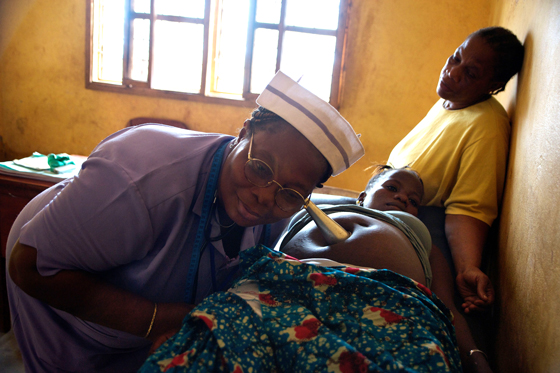By: Bernadette Daelmans
In the year that we ushered in a new development era of the Sustainable Development Goals and the Global Strategy for Women’s, Children’s, and Adolescents’ Health, there were 2.7 million newborn deaths, 2.6 million babies stillborn and 303,000 maternal deaths. Many of these deaths were preventable and in the next 15 years, we must work towards ensuring that a woman’s right to access quality health care for herself and her family is fulfilled.
The Lancet’s Ending Preventable Stillbirths Series projects that 52 million stillbirths are expected in the next 20 years. A staggering 98% of all stillbirths occur in low and middle income countries. Many of stillbirths that take place around the time of birth and are highly preventable including 1.3 million babies who begin labour alive and die before birth. If high quality care was received during pregnancy and childbirth, the result would yield a quadruple return on investment by preventing maternal and newborn deaths and stillbirths, plus improving child development.
The Global Strategy for Women’s, Children’s, and Adolescents’ Health points out that the provision of effective care in facilities for women and babies at the time of birth could save lives and prevent 531,000 stillbirths annually by 2020. The Global Strategy also stresses the importance of investing in health systems alongside high-impact health interventions to prevent 32 million stillbirths by 2035.
It is time to count stillbirths
The Global Strategy strives for a world in which every mother can enjoy a wanted and healthy pregnancy and childbirth, and every child can survive beyond their fifth birthday’. The targets to end preventable stillbirths were set in the Every Newborn Action Plan, and endorsed by 194 countries at the World Health Assembly in 2014.
Every Newborn target for stillbirth: all countries to reach the target of 12 or fewer stillbirths per 1,000 total births and continue to close the equity gap.
The Sustainable Development Goals do not have a target or indicator for stillbirth, however, work is currently in progress to position stillbirth rate as one of the indicators for Global Strategy. By ensuring all stillbirths are counted, we can monitor the extent of the incidence of stillbirth in every country and monitor progress. Counting stillbirths will track and improve quality of care for women and children but it will also be a marker of health systems’ strength. The Series shows that the stillbirth rate is a sensitive marker of quality and equity of health care.
Quality of Care for mothers and newborns in the time around birth
Efforts to prevent stillbirths include quality antenatal care and care at childbirth and will also contribute to preventing maternal and newborn deaths and improving health outcomes for children through their lives. WHO and UNICEF are currently working with Ministries of Health and partner organisations to provide actionable guidance for countries across the globe to achieve these outcomes. A number of countries have now adopted country goals and targets as part of their national Every Newborn Action Plans or maternal and newborn health strategies. These comprehensively outline the inputs required including key clinical interventions, training, commodities and infrastructure as well as and the data systems needed to measure and report performance.
In support of this, WHO has developed a set of quality of care standards that recognize the broad range of health systems factors that are required to support the reliable implementation of evidence-based care; the standards are organized in eight quality domains that will need to be focused on in order to achieve a high quality maternal and newborn care in health services. Ensuring inputs and defining standards is not enough to drive successful action. As a next step, the WHO is preparing implementation guidance – providing countries with a roadmap for implementation and scale up of quality of care that draws on theoretical models from implementation science, the best available evidence for what interventions should be used, and the experience of a number of countries that are already successfully using these approaches.
Built on a clear set of implementation principles, the roadmap will provides guidance that can be applied flexibly by government ministries, health district managers, unit leaders and front line providers – understanding that every country is uniquely situated in its current trajectory to improve maternal and newborn outcomes. While the guidance may be used differently depending on country needs, the guide will have a clear step-wise approach to achieve a common goal – the rapid decrease of maternal and newborn deaths, and stillbirths in an accelerated time-frame.
Working together in partnership, we can increase our knowledge of stillbirths and work to improve equitable access to quality care to end preventable stillbirths.
